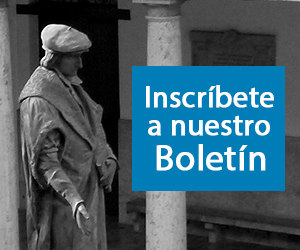
Autor: Ignacio Gallego Domínguez. Catedrático de Derecho Civil de la Universidad de Córdoba. igallego@uco.es.
Resumen: Las uniones de hecho constituyen una opción de convivencia en pareja, diferente de la matrimonial, que conforman una familia protegida por la Constitución española (art. 39.1). Estas diferencias han llevado al Tribunal Constitucional español a entender que no es inconstitucional dar un tratamiento jurídico diferenciado a ambas realidades, si bien no ha admitido sea constitucionalmente admisible ignorar a las sobrevivientes de parejas de hecho como beneficiarios del derecho de subrogación a la muerte del arrendatario. El TS ha negado, en general, la aplicación por analogía (“analogía legis”) a las parejas de hecho de las soluciones legales dictadas para los matrimonios. La convivencia de una unión de hecho se desarrolla en una vivienda familiar. La ocupación de la misma podrá basarse en un título, sea la propiedad, arrendamiento, usufructo, habitación, o realizarse en precario. En el presente estudio estudiamos el complejo tema de los arrendamientos de vivienda y las parejas de hecho conforme a la Ley de Arrendamientos de 1994. Es base para un adecuado tratamiento de la cuestión distinguir entre aquellos supuestos en que solo uno de los comuneros es titular del arrendamiento, de aquéllos en que los son ambos. La LAU de 1994, contempla en ocasiones la aplicación de ciertas de sus normas al supuesto de arrendamientos concertados por alguno de los miembros de la pareja de hecho: art. 12, que contempla los supuestos de renuncia, no renovación o abandono por parte del arrendatario-, el art. 16, que se ocupa del supuesto de subrogación “mortis causa”, el art. 24, en materia de obras para adaptar la vivienda arrendada a la especial situación de discapacidad o edad del arrendatario o de su unido de hecho y la Disposición Transitoria 2, en materia de subrogación “mortis causa” de contratos celebrados antes de la entrada en vigor de la LAU de 1994. Todas estos estas cuestiones, junto con la posible aplicación del art. 15 de la LAU a las parejas de hecho, que regula la atribuciones de uso de la vivienda familiar en los casos de crisis conyugales, o el pago de la renta.
Palabras Clave: uniones no matrimoniales, vivienda familiar; arrendamiento de vivienda; arrendatario; coarrendatario; desistimiento; no renovación o abandono por el arrendatario; subrogación “mortis causa”, pago de la renta.
Abstract: De facto unions constitute an option of cohabitation as a couple, different from marriage, which form a family protected by the Spanish Constitution (art. 39.1). These differences have led the Spanish Constitutional Court to understand that it is not unconstitutional to give a differentiated legal treatment to both realities, although it has not admitted that it is constitutionally admissible to ignore the survivors of common-law couples as beneficiaries of the right of subrogation upon the death of the tenant. The Spanish Supreme Court has denied, in general, the application by analogy («analogy legis») to unmarried couples of the legal solutions dictated for married couples. The cohabitation of a domestic partnership takes place in a family dwelling. The occupation of the same one will be able to be based on a title, be the property, lease, usufruct, habitation, or to be realized in precariousness. In the present study we study the complex issue of housing leases and domestic partnerships under the 1994 Lease Law. The basis for an adequate treatment of the issue is to distinguish between those cases in which only one of the members of the couple is the only tenant, and those in which both are. The LAU of 1994 sometimes contemplates the application of certain of its rules to the case of leases entered into by one of the members of the non-married couple: art. 12, which contemplates the cases of waiver, non-renewal or abandonment by the lessee, art. 16, which deals with the case of subrogation “mortis causa”, art. 24, regarding works to adapt the rented dwelling to the special situation of disability or age of the tenant or his common-law spouse, and Transitional Provision 2, regarding subrogation “mortis causa” of contracts entered into before the entry into force of the LAU of 1994. All these issues, together with the possible application of art. 15 of the LAU to unmarried couples, which regulates the attribution of the use of the family dwelling in cases of marital crisis, or the payment of rent.
Key words: non-married couples; family dwelling; housing lease; tenant; cotenant; waiver; non-renewal or abandonment by the lessee; subrogation “mortis causa”; payment of rent.
Sumario:
I. LAS PAREJAS DE HECHO Y LA VIVIENDA FAMILIAR.
1. Introducción a las parejas de hecho.
2. La vivienda familiar. Título de ocupación.
II. VIVIENDA EN ARRENDAMIENTO.
1. Introducción.
2. Arrendamientos titularidad de uno solo de los convivientes y arrendamientos conjuntos.
III. ARRENDAMIENTOS TITULARIDAD DE UNO DE LOS CONVIVIENTESDE LA PAREJA DE HECHO.
1. El arrendamiento durante la vida de la pareja.
A) El pago de la renta y de las cantidades asimiladas.
B) Adaptación de la vivienda arrendada a la especial situación de discapacidad del unido de hecho (art. 24 de la LAU).
C) Cesión “inter vivos” del contrato (art. 8 de la LAU de 1994, art. 58 del TRLAU 1964).
2. El arrendamiento a la ruptura de la pareja.
A) Renuncia o abandono de la vivienda arrendada por el unido de hecho arrendatario. El art. 12 LAU 1994.
B) La atribución del uso de la vivienda familiar arrendada en las crisis matrimoniales. El art. 15 de la LAU.
C) Subrogación mortis causa: art. 16 LAU de 1994.
IV. ARRENDAMIENTO CONJUNTOS.
1. Arrendamientos conjuntos durante la vida de la unión.
A) El pago de la renta.
B) Arrendamientos conjuntos y art. 24 de la LAU de 1994.
2. Arrendamientos conjuntos a la ruptura de la unión.
A) La ruptura de la unión. El abandono de la vivienda por uno de los coarrendatarios. La muerte de uno de los coarrendatarios.
B) La ruptura de la unión. El juego del art. 15 de la LAU en el caso de arrendamientos conjuntos.
Referencia: Actualidad Jurídica Iberoamericana Nº 19, agosto 2023, ISSN: 2386-4567, pp. 284-333.
Revista indexada en SCOPUS (Q3), REDIB, ANVUR (Clase “A”), LATINDEX, CIRC (B), MIAR, RRDe (Q1), IDR (C2).





